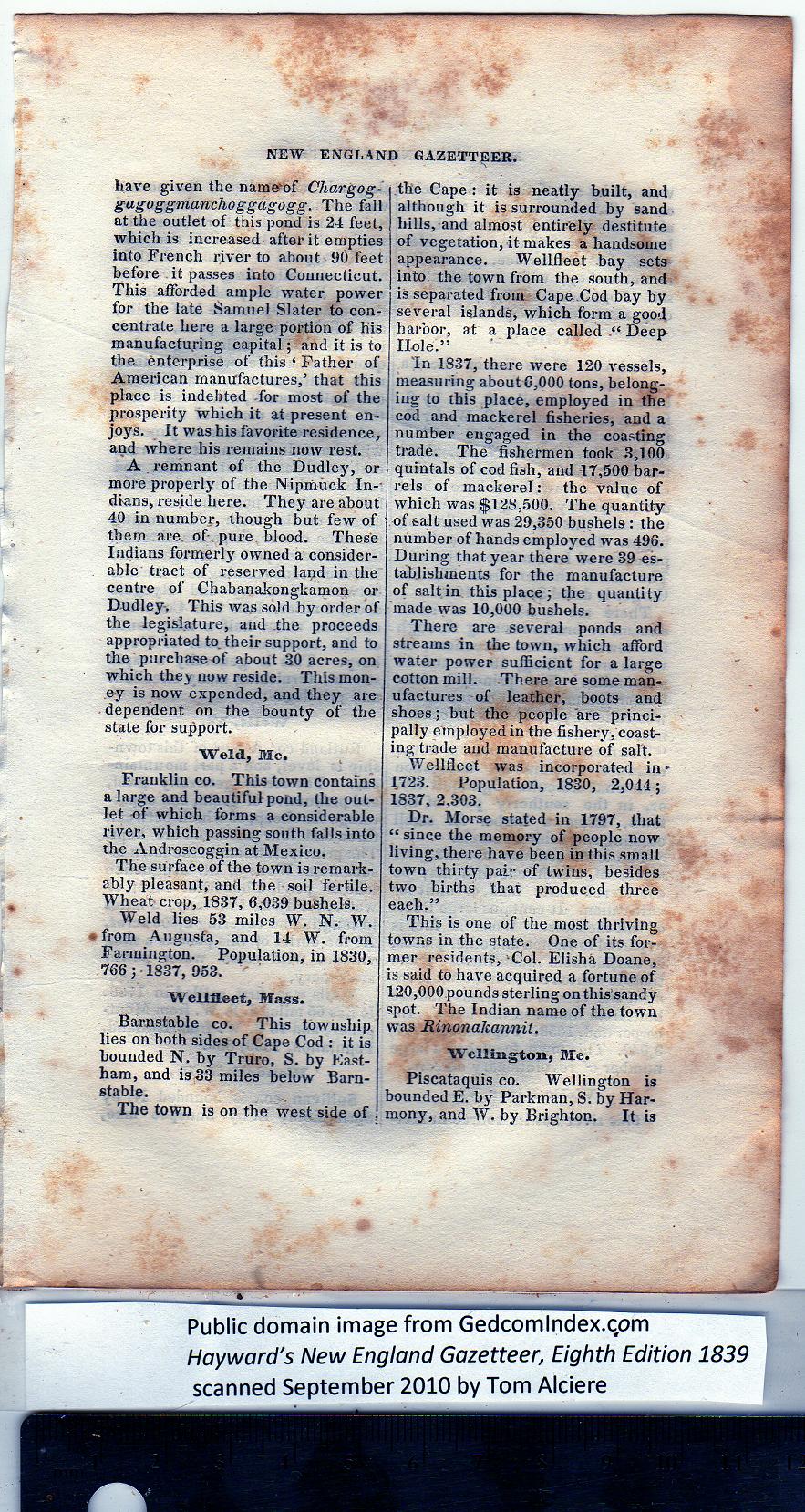|
have given the naratfof Cliargog-
gagoggmanchoggagogg. The fall
at the outlet of this pond is 24 feet,
which is increased after it empties
into French river to about 90 feet
before it passes into Connecticut.
This afforded ample water power
for the late Samuel Slater to con-
centrate here a large portion of his
manufacturing capital; and it is to
the enterprise of this ‘ Father of
American manufactures,’ that this
place is indebted for most of the
prosperity which it at present en-
joys. It was his favorite residence,
and where his remains now rest.
A remnant of the Dudley, or
more properly of the Nipmuck In-
dians, reside here. They are about
40 in number, though but few of
them are. of pure blood. These
Indians formerly owned a consider-
able tract of reserved land in the
centre of Chabanakongkamon or
Dudley, This was sold by order of
the legislature, and the proceeds
appropriated to. their support, and to
the purchase of about 30 acres, on
which they now reside. This mon-
ey is now expended, and they are
dependent on the bounty of the
state for support.
Weld, Me.
Franklin co. This town contains
a large and beautiful pond, the out-
let of which forms a considerable
river, which passing south falls into
the Androscoggin at Mexico.
The surface of the town is remark-
ably pleasant, and the soil fertile.
Wheat crop, 1837, 6,039 bushels.
Weld lies 53 miles W. N. W.
from Augusta, and 14 W. from
Farmington. Population, in 1830,
766; 1837, 953.
WeLLfleet, Mass.
Barnstable co. This township
lies on both sides of Cape Cod : it is
bounded N. by Truro, S. by East-
ham, and is 33 miles below Barn-
stable.
The town is on the west side of |
the Cape : it is neatly built, and
although it is surrounded by sand
hills, and almost entirely destitute
of vegetation, it makes a handsome
appearance. Wellfleet bay sets
into the town from the south, and
is separated from Cape Cod bay by
several islands, which form a good
harbor, at a place called “ Deep
Hole.”
'In 1837, there were 120 vessels,
measuring about 0,000 tons, belong-
ing to tbis place, employed in the
cod and mackerel fisheries, and a
number engaged in the coasting
trade. The fishermen took 3,100
quintals of cod fish, and 17,500 bar-
rels of mackerel: the value of
which was $12S,500. The quantity
of salt used was 29,350 bushels: the
number of hands employed was 496.
During that year there were 39 es-
tablishments for the manufacture
of salt in this place ; the quantity
made was 10,000 bushels.
There are several ponds and
streams in the town, which afford
water power sufficient for a large
cotton mill. There are some man-
ufactures of leather, boots and
shoes; but the people are princi-
pally employed in the fishery, coast-
ing trade and manufacture of salt.
Wellfleet was incorporated in*
1723. Population, 1830, 2,044;
1837, 2,303.
Dr. Morse stated in 1797, that
“ since the memory of people now
living, there have been in this small
town thirty pair of twins, besides
two births that produced three
each.”
This is one of the most thriving
towns in the state. One of its for-
mer residents, Col. Elisha Doane,
is said to have acquired a fortune of
120,000 pounds sterling on this*sandy
spot. The Indian name of the town
was Rinonakannit.
Wellington, Me.
Piscataquis co. Wellington is
bounded E. by Parkman, S. by Har-
mony, and W. by Brighton. It is |
